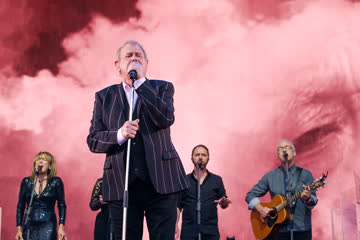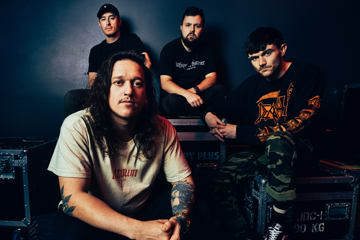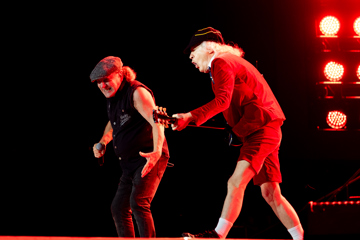The Films You Should (And Shouldn't) See On Boxing Day
(Hint: Go see La La Land)
LA LA LAND

When the words "Five Years Later…" come on screen, in any film, it can strike fear in my heart; having been conditioned by the standard One Year Later tacked on to rom-coms, which show the principles paired up, perhaps pregnant, in the most artless of happily-ever-after epilogues. Damien Chazelle’s screen musical La La Land has —up until that title appears on screen— before that, progressed simply through the seasons; charting a year in the lives —and the romance— of Ryan Gosling and Emma Stone.
He, the human-meme, plays a nostalgic jazz pianist; she, a struggling actress. Their relationship has been equal parts storybook-vision and screen-vérité, and, come autumn they Fall upon hard times. The film ends, seemingly, in a place of acceptance: each open to the difficulties of being in a relationship where things —tours, shoots, emotions— can pull the other apart. “I’ll always love you,” they say, without the fanfare of a Whitney Houston ballad; quietly speaking a simple truth aloud. Whatever the future holds in store for them won’t alter that fact, won’t erase the time they’ve spent together.
Don't miss a beat with our FREE daily newsletter
Only, then, it doesn’t end: it’s five years later, and things have changed. Replaying a scene from the film’s start, a starlet walks into a studio-lot coffee-shop, the crowd parts, and the aura of her celebrity lights up the screen. At La La Land’s beginning, Stone is a waitress at this café, gawping at some an unnamed screen-siren; but, years on, she’s now become the actress, the figure of envy and success. It sets the tenor for an unexpected final-reel coda that is all about time; how it marches forward, but can feel like it’s repeating.
In another scene that echoes the film’s first Winter, Stone ends up, at the end, in a jazz-club, where Gosling is, just as he was way-back-when, tinkling the ivories. And, then, in a sequence beautifully staged and knowingly heartbreaking, La La Land returns back to the start, and swims through an alternate telling of itself; a new history of their relationship shot through with melancholy romance. It moves through surreal worlds —the sci-fi white-light of a blank studio space, a storybook Paris built from movie-set approximations of impressionist paintings, dancing on a river of lights— and then makes fantasy and memory one, as the alt-Gos/Stone watch super-8 memories, within this dreamt other realm, of the lives they’ve never lived, the history they haven’t shared. Eventually, time turns all the way back around, and intersects with the film’s present; La La Land folding in on itself, in some cinematic möbius strip, making this motion-picture portrait of Los Angeles, for an unexpected moment, resemble a far different one: David Lynch’s Mulholland Drive.
This entire temporal pirouette takes place in one singular musical movement; though you’d be hard-pressed to call it, simply, a ‘song’. This shows the approach that Chazelle —a drummer, whose sense of rhythm is forever shown in the editing— and composer Justin Hurwitz take to the music. Though La La Land opens with a full-blown song-and-dance number on a freeway overpass, most of its musical moments arise simply, played naturally off conversations. They stop, re-start, become something else, go away. The line demarcating the divide between drama and dance is erased; music, here, feels like a part of life, not a fantasy break from it.
Chazelle and Hurwitz debuted, as but college kids, with 2009’s Guy And Madeline On A Park Bench, a mumblecore musical in which the no-budget set-up required a creative conversation with realism. La La Land works on a far more ambitious scale, but it, too, has a sense of emotional realism; anchors its drama in things human, in foibles and failings, raw feelings. Stone, attempting to find a career as actor, finds herself beholden to a profession of rejection, filling with rising insecurity. Gosling, whose role shows his sublime comic timing, is obsessed with jazz’s early-20th-century glory days, chasing not just piano-playing ambitions, but the ghost of a dying genre.
Together, they make a duly-inevitable pair of paramours: each living with their head in the clouds; each demanding the other hold tight to their dreams; each convincing the other that their bad ideas are good ideas. It’s a portrait of a youthful relationship, all whimsy and passion, hopes and collaboration, privilege-poverty and wild imagination. For those who seek romanticism in the cinema, La La Land is just beautiful. There’s a sweet, fleeting moment where Stone, seeing the cinema marquee that stands as symbol of their imminent first date, breaks into a shy smile. When she blows in, late, to a screening of Rebel Without A Cause, she’s lit up, electric blue, by the projected film; then, in the darkness, they gently hold hands. Of course, being a for-real screen musical, that first date ends with them dancing in the stars, in a whirl of pure movie-makin’ magic.
The influence of hyper-stylised, self-referential musicals like Singin’ In The Rain, The Umbrellas Of Cherbourg, and One From The Heart lingers; the film marrying its romance with knowing wryness, offering a valentine to the very idea of the studio musical. But any notion of La La Land as some simple shrine to Hollywood seems misguided; given that there’s moments of visual invention/abandon —like a camera turning delirious, psychedelic circles half-submerged in a swimming pool— and, ultimately, a bittersweet quality that plays as anathema to the Hollywood fantasies of either Technicolour yore or Oscarbait now.
For all its singing and dancing, La La Land is a film in which the real world forever impinges on the fantasy. It’s a film about dreams, daydreams, and pipe-dreams, and the difficulty of telling the difference between them. It’s about people who start out with pie-in-the-sky hopes and extravagantly outsized emotions, only to meet the cold realities of relationships, and growing up. When lost in the throes of a song, the present moment can seem to melt away, but La La Land knows that the profundity of that experience is relative, in equal measure, to the cruelty of time. A song you can play over and over, but time is a straight line; all our experiences swiftly receding into the romanticism of memory, all our youths, eventually, going to waste.
WHY HIM?

The sitcom contrivance of Why Him? feels forced from the get-go: old-fashioned, working-class, bricks-and-mortar businessman Bryan Cranston is maddened when his beloved daughter (Zoey Deutch) shacks up with James Franco’s shameless, hyper-sexualised tech bro. Cue: a Meet The Parents sitcom where men act like squabbling boys, and there’s a weird, contrived ‘you have three days to prove yourself marriage material’ edict. It’s set at Christmas, too, to up the rom-com clichés; and Ben Stiller even serves as a producer. You’ve seen this film before, even if you haven’t seen this exact film before.
Whilst a bunch of funny people show up (a brief glimpse of Andrew Rannells made my blackened film-crit heart, momentarily, come to life), and there’s some bawdy sexually-suggestive laughs to be had, director John Hamburg never makes the central premise remotely convincing. Franco, playing another stoner goofball, is no kind of nightmare; instead, he oozes easy charisma, a puppy-dog-ish playfulness, and a desperate need to be loved. Cranston is the audience’s ‘in’, but he’s neither empathetic figure nor symbol of patriarchal menace; if it’s dad-losing-his-shit-about-who-his-daughter’s-fucking comedy you want, that one 22 Jump Street sub-plot milks more hostility and laughs out of the set-up in like two scenes.
A large reason the central premise fails to convince is that that Hamburg and co-writer Ian Helfer realise they’re reheating a lukewarm, dated idea. “Why do you even care about what I think?” Cranston asks Franco, at one point, and the line is telling: there’s no reason, in this set-up, that either would care. Nor, indeed, will the audience. Ultimately, the lesson to be learnt(!) is that a woman’s romantic fate should be her own. That’s, I guess, some kind of progress?
A UNITED KINGDOM

David Oyelowo knows how to deliver a rousing speech. In Ava DuVernay’s Selma, he rose to the challenge of playing Martin Luther King, one of the 20th century’s great orators; marrying his commanding screen presence to the power of King’s words. In Amma Asante’s A United Kingdom, the most potent, powerful moments come, again, when Oyelowo is addressing a crowd —be he standing in front of a congress or atop the bonnet of a car— proving magnetic, and moving, with every word.
Here, in a based-on-a-true-story tale, he plays the prodigal prince of Bechuanaland, who returns from an English education in the 1940s with a white wife on his arm. At a time in which South Africa was enacting Apartheid into law, this mixed marriage had political ramifications that rippled throughout the British Empire; the prince refusing to submit to pressures to end his marriage, or abandon his throne.
The legacy of the real-life Seretse and Ruth Khama lives on, with modern-day Botswana one of Africa’s most prosperous countries, their plenty founded on Khama’s dismantling of the old extractive economic systems of Colonialism. But, here, aside from some sterling Oyelowo speeches, this real-life triumph plays like safe Oscarbait: a matinée drama tut-tutting the horrors of dated social values, with characters veering towards caricature, and story kept to a three-act beat.
ROSALIE BLUM

Love stalking? Then this ‘crowdpleasing’ French comedy is for you. Kyan Khojandi plays a lonely middle-aged loser who, struck by déjà vu after meeting Noémie Lvovsky’s bespectacled shopkeeper (the titular character), starts following her. She turns out to be lonely, too, and, when she notices the dude stalking her, she recruits her niece, Alice Isaaz, to start following him around. Isaaz, too, is sad and lonely; though she also comes with wacky friends and a zany housemate, upping the comic quotient of a film whose hopeful tone is, usually, ‘warm-hearted’.
As our trio follows each other in circles, revelations about the past bubble up; the film shifting perspectives, adding layers to the tale. Khojandi’s suffering is as simple as an overbearing mother (hilariously hitting him over the head!), but Isaaz has a perfunctory painful-family-drama, and Lvovsky a past whose tragedy feels like a standard third-act revelation. Each has, in their own way, either rejected or been rejected by their family, and, sure enough, they’ll eventually become a quasi family unit. Whether or not you’re ‘pleased’ by that crowdpleasin’ ending will probably come down to how you feel about middle-aged men bedding much-younger women.
PATERSON

Paterson is about the poetry of everyday life, but it’s also about, like, poetry. Adam Driver —his very name, coincidentally, suggesting his character— plays a New Jersey bus-driver whose quotidian existence is one of routine: every day he rises early, walks to work, drives the bus, comes home, eats dinner with his girlfriend (Iranian siren-in-exile Golshifteh Farahani), walks her dog, nurses a solitary beer at the local bar, and then goes to bed.
As he goes about his repetitious days, he writes poems. Penned by Ron Padgett, they’re small, domestic valentines indebted to William Carlos Williams, whose name is summoned in the film, and in whose real-life hometown it is set. Driver narrates the poems, haltingly, as he’s penning them; the screen filling up with words, the flowering of ideas manifest. He goes over the lines, refining them, letting them summon the next. Paterson, warmly, is about the process of creation; situating it, humbly, within daily life.
It’s a zen-like film from Jim Jarmusch; one that both keeps with his calm auteurist style, whilst slyly breaking away from it. Jarmusch, at his worst, makes movies that are works of cool dude-ism: films filled with vintage records and knowing references, celebrity rock’n’roll friends and cigarette smoke. Paterson, in contrast, seems impossibly pure, and genuinely romantic. There’s little drama, and, when the obligatory gun arrives on screen, it turns out to be something else entirely; Jarmusch immediately doubling back on the trope.
Driver, so lauded for his brashness and uneasiness, here sands away the edges of his screen presence, losing himself in a performance that’s gentle, content. He plays a man of routine who is happy with his life of routines; who loves his girlfriend, enjoys his job, and creates for the simple sake of creation. When Masatoshi Nagase (Jarmusch’s old Mystery Train homie, last seen in Naomi Kawase’s An) shows up, on close, for a meta-conversation about poetry, Paterson finds a resolution filled with calm and acceptance. It’s a fitting finale for a film that seems to exist in opposition to the hysteria of contemporary American cinema.
GIMME DANGER

Paterson isn’t the only 2016 Jarmusch film getting a Boxing Day release. Gimme Danger finds Jarmusch, two decades after his Neil Young tour-movie Year Of The Horse, making his second documentary. Again, it’s another shrine to the rock mythos of a Jarmusch collaborateur, with Iggy Pop taking centre-stage in the standard talking-heads-and-archival-footage tale of the life and times of The Stooges. Iggy —who appeared in both Dead Man and Coffee & Cigarettes— is, gladly, a garrulous figure, a raconteur whose recollections of a life of rock’n’roll recalcitrance are smart, self-deprecating, wry.
Documentaries celebrating long-ago artistic achievements stall when the talking-heads —and the filmmakers themselves— simply tell audiences about artistic greatness, rather than the film showing evidence of it. Gladly, Jarmusch recruits none of the standard rockumentary interviewees (No Rollins! No Bono! No Thurston!), but digs out a cache of archival film. Seeing Iggy on stage, back in the day, prowling like a street-walkin’ cheetah, alive and wild and consumed with the theatre of the music, is enough to, instantly, capture the resonance —the raw power— of The Stooges.
It’s plenty entertaining stuff, albeit one in which Jarmusch’s own artistry, and fondness for cinematic formalism, doesn’t come through. This is Jarmusch in fan-boy mode, Gimme Danger boasting an earnestness unfamiliar for the director. It’s understandable given that, as Stooges fans will surely know, the film isn’t going to end well; this a band whose final album, Ready To Die, wore a title that proved prophetic.
JANIS: LITTLE GIRL BLUE

Gimme Danger isn’t the only obligatory rockumentary of a Baby Boomer icon getting a Boxing Day release. Janis: Little Girl Blue is the screen tribute to boozy blues wailer Janis Joplin, whose Monterey Pop breakout and 27-Club-induction 1970 death etched her into rock’n’roll lore. Little Girl Blue, too, finds an accomplished filmmaker effectively slumming it in the rockumentary realm: Amy Berg, maker of provocative institutionalised-sexual-abuse exposés Deliver Us From Evil, An Open Secret, and Prophet’s Prey.
And, sure enough, Berg hews to genre form: delivering talking heads and Woodstock footage, unironic shrines to the heydays of Haight-Ashbury hippiedom. The myth of Joplin —tragic rock’n’roll saint— is played up to, but Berg also endeavours to humanise her subject; showing her as insecure, unsure, petty, self-destructive. Chan Marshall is roped in to read Joplin’s old letters aloud, and what’s striking, in hearing them, is the innocence of the writing, and of the time: Joplin writing about fame, celebrity, and success with none of the cynicism, wariness, or darkness that modern audiences would bring to such ideas.







